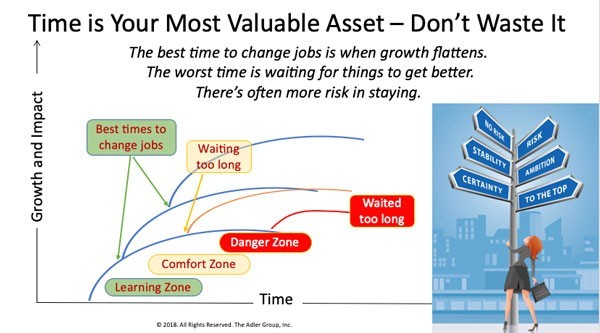Here’s a Common-Sense Approach to Predict and Eliminate Turnover
A major tech company just made a big brouhaha over its “uncanny” ability to use AI to predict which employees will voluntarily leave a company within the next 12 months. But in my opinion, there are far easier techniques to stop turnover by simply understanding why people change jobs and accept offers in the first place.
Over the past 40 years of recruiting passive candidates, I’ve learned a lot about why people change jobs. While their active or passive job-hunting status is unknown on first contact, it’s pretty easy to figure out if they’ll change jobs by asking these two questions:
1. Would you be open to discuss a career opportunity if it were clearly superior to your current situation?
2. Are you currently actively looking for another spot and, if so, for how long have you been looking?
Just about everybody (over 90%) says yes to the first question and no to the second one. This is true even for those who indicate they’re happy or very satisfied in their current job. Having personally asked these same two questions to thousands of top performers, it’s very clear that everyone has some level of dissatisfaction with their current job. And if companies can understand what’s causing the dissatisfaction, they can keep their own employees from leaving. In reality, they just have to ask.
Enter the satisfaction survey — the key to reducing turnover
Companies that want to reduce turnover can keep track of employee irritants via a simple satisfaction survey. This offers big clues to when people are starting to get itchy and when some type of intervention is essential. This is far less costly and more personal than investing in more exotic solutions.
Based on my experience, these are the main reasons people start looking for a new job and the factors they say make them open to consider a job switch:
1. Career growth has slowed down or stopped. As shown in the graphic below, people start looking when growth has flattened or is going downhill. People are more open to look whenever the growth curve starts declining or when they observe fewer learning opportunities developing.
2. There’s a problem with the manager. This issue has many causes, including a new boss who isn’t in agreement with the person’s point of view — or where the manager’s management and coaching style is not a fit with the person’s need for management and coaching.
3. The mix of work is not satisfying. Most people will leave if the work is beneath their abilities or if something comes along that offers work that is more intrinsically motivating. Dissatisfaction sets in quickly for new hires when the work is not what was expected.
4. Cultural change. Much of a company’s culture is defined by its rate of growth and financial performance, and can be affected by any big organizational or leadership change. People voluntarily leave when any of these external events are viewed as not positive.
A simple job satisfaction survey can predict and reduce turnover without the need for a high tech AI-based solution. Conduct the survey quarterly and intervene immediately in all cases where job satisfaction is in the lower third. You’ll likely find the problem is one of the predictors described above. For those in the middle-third, proactively review the results with the manager and employee to determine what would be necessary to improve job satisfaction. Use the information from those in the top third to design an ongoing companywide program for improving employee engagement and job satisfaction.
I created this survey to determine if highly satisfied people could be lured away with a better career opportunity. It turned out they could be for the reasons cited above.
Final thoughts
Despite the promise of faster growth, too many people overvalue the short-term benefits of a job change, largely the compensation package, rather than fully understanding the long-term career merits of the move. That’s why I suggest using the 30% Solution as a guide for comparing career opportunities. This simply says that it’s not worth changing jobs unless it provides a minimum non-monetary increase of 30% consisting of some job stretch, more rapid learning and growth, a mix of more satisfying work, and a job with more impact.
Companies should also use this 30% guideline when making offers ensuring the person hired is accepting the job for the right reasons. This step alone will reduce new hire turnover by eliminating its causes before it becomes a problem. This seems like a far better and more personal approach that will yield instant results rather than using another high tech AI solution that only masks the obvious and delays the solution.
To receive blog posts like this one straight in your inbox, subscribe to the blog newsletter.
Topics: Employee retention
Related articles





